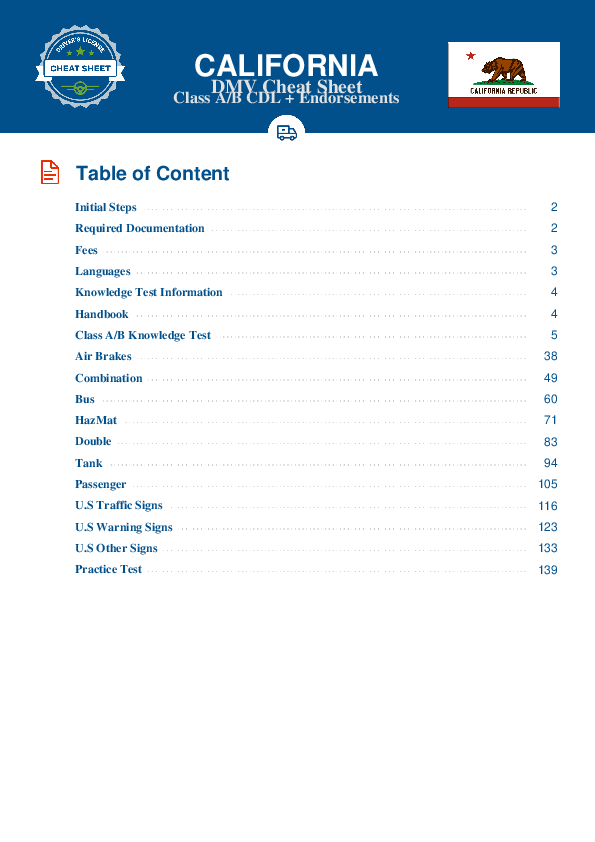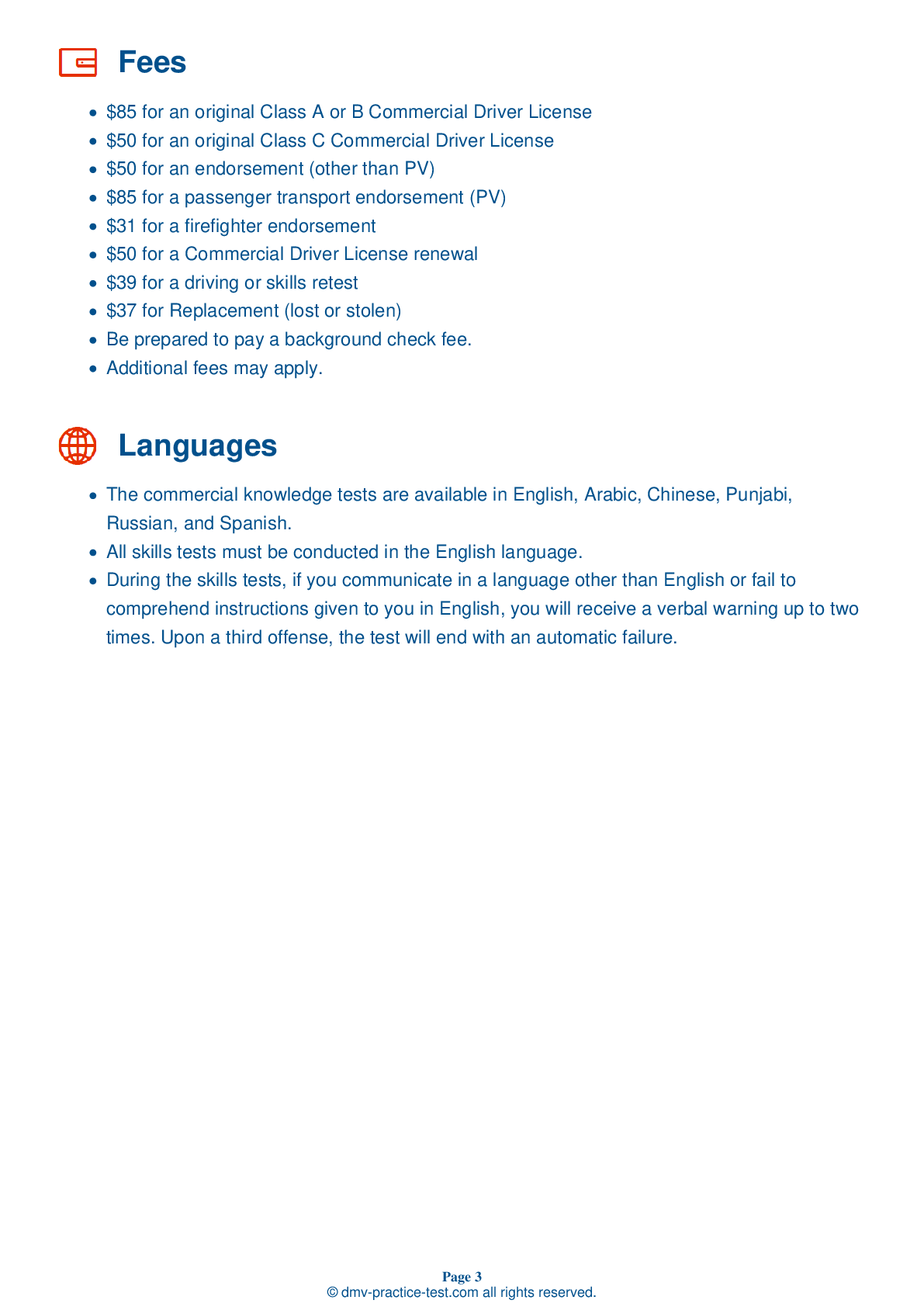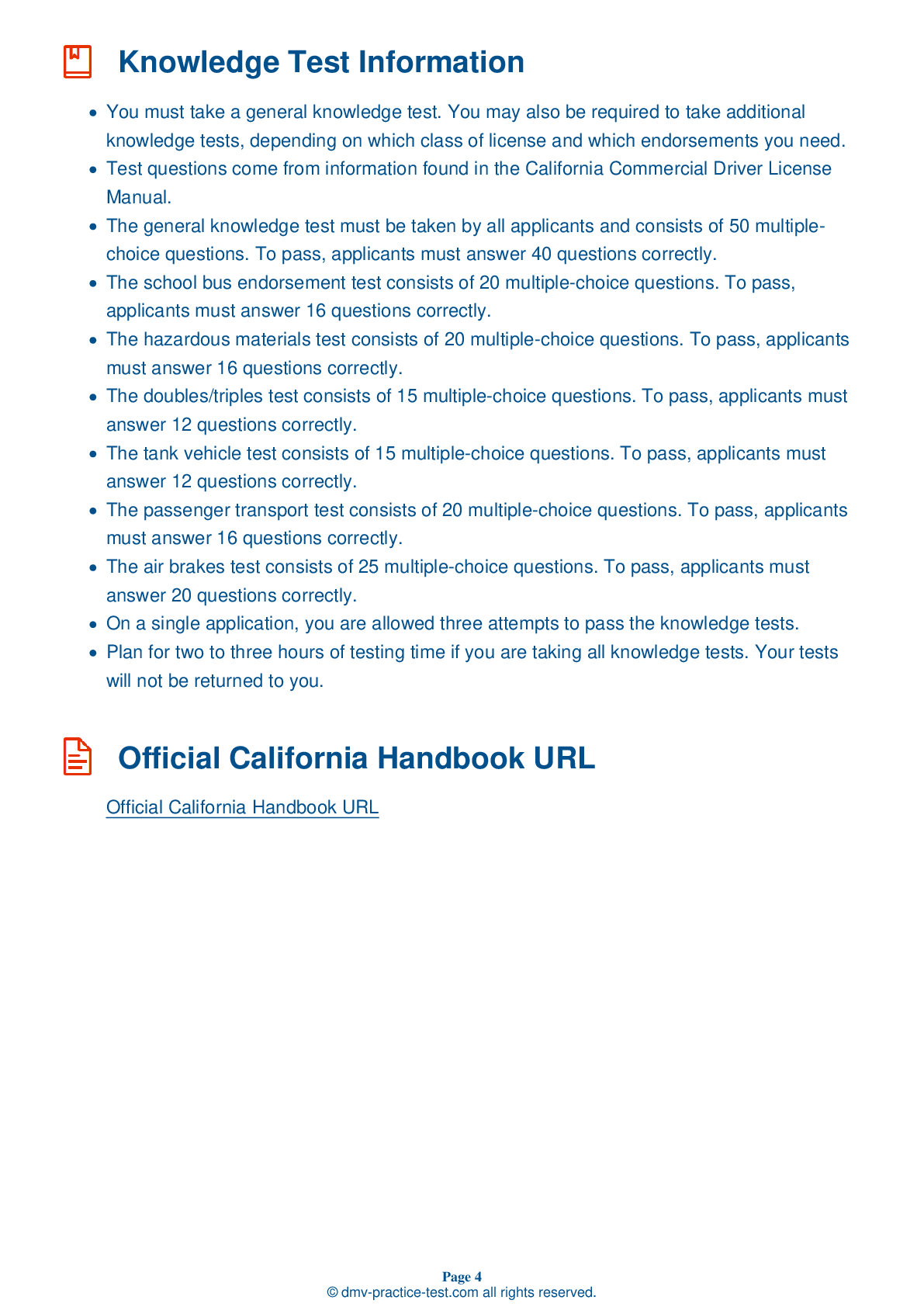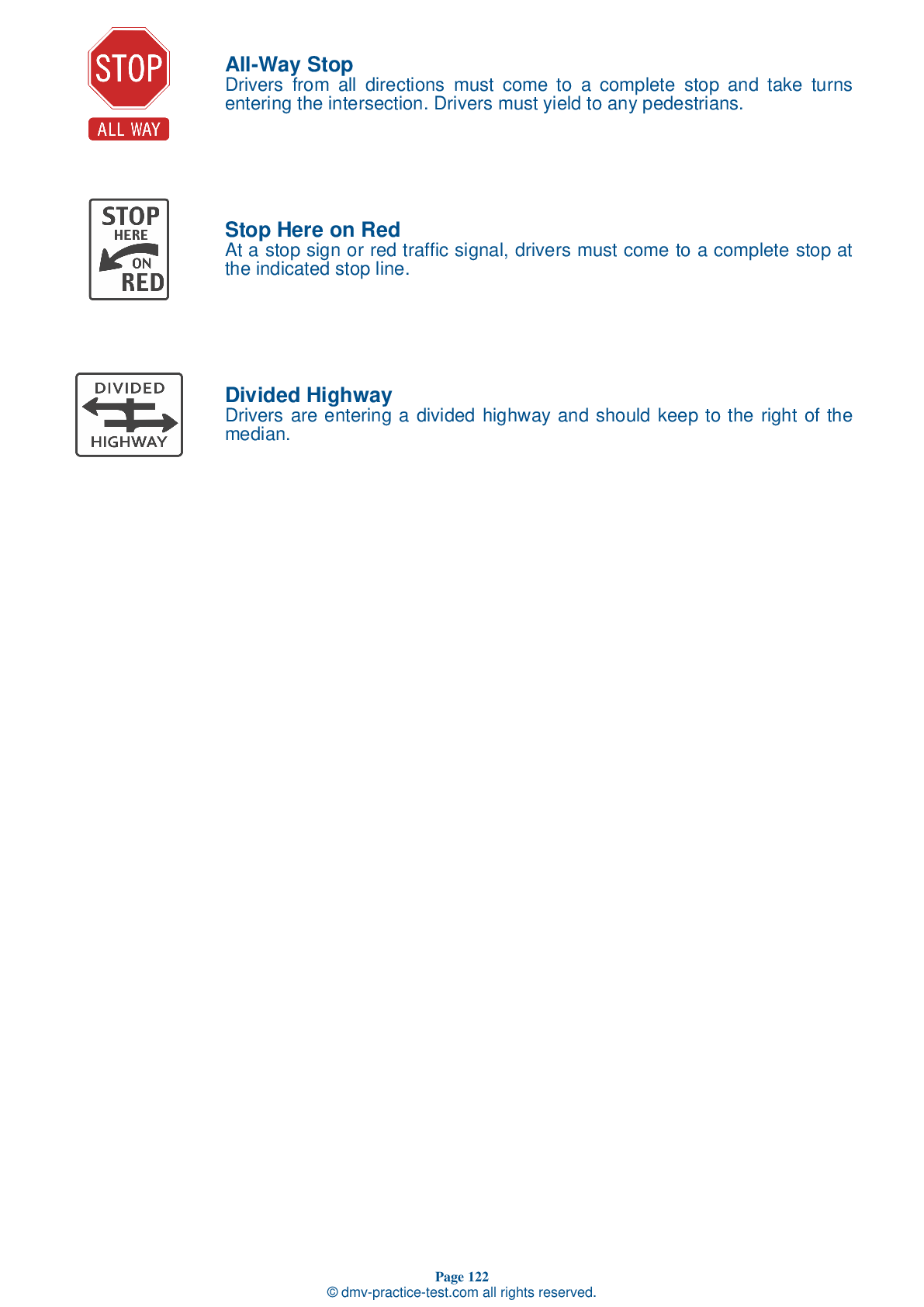Passenger #1
Passenger Endorsement | California 2025 #1
Train for FREE with our California CDL passenger endorsement practice test online. The official exam test consists of several obligatory parts, with all of them checking your knowledge of different blocks of road rules. If you need to obtain a CA DMV passenger endorsement in 2025, practice as much as possible. Free sample tests published on our website will help you check and improve your knowledge and boost your grades. Please bear in mind that DMV requirements for issuing a CDL permit with passenger endorsement may vary from state to state.
20
17
20
1 . Once passengers have boarded your bus, you should:
Begin driving as quickly as possible.
You should start and stop as smoothly as possible to help prevent passenger injury. After passengers have boarded your bus at a stop, you should allow them time to be seated or to brace themselves before you begin driving.
2 . To use the controlled braking method, you should:
Controlled braking is the method of applying a vehicle's brakes as hard as possible without locking the wheels. A driver should keep steering wheel movements very small if braking while using this method.
3 . When completing a conventional parallel parking maneuver, you should:
You may be asked to complete a conventional parallel parking maneuver into a parking space that is to the right of your vehicle. You should drive past the parking space before backing into it while bringing the rear of your vehicle as close to the rear of the space as possible. Your vehicle should be completely within the boundaries of the space.
4 . Which of the following is not a sign of tire failure?
If you experience tire failure, you may hear the loud "bang" sound of a blowout or feel a heavy thumping or vibration in your vehicle. If steering begins to feel heavy, or if the rear of your vehicle begins to fishtail, you should stop to check your tires.
5 . If you have an engine fire, you should:
To keep an engine fire from spreading, you should turn off the vehicle's engine as soon as possible. Do not open the hood if you don't have to.
6 . While passengers are on board a bus, refueling the bus in an enclosed space, allowing the bus to be towed, and conversing with the passengers are considered to be:
Bus drivers should not engage in conversation with passengers, fuel a bus inside an enclosed building, or tow or push a disabled bus with riders aboard the vehicle. These are all considered to be prohibited practices.
7 . Rough acceleration:
Rough acceleration can cause mechanical damage, so be sure to accelerate smoothly and gradually.
2025 California | Frequently Asked Questions
In California, a Commercial Driver's License (CDL) Class A license allows the holder to operate any combination of vehicles with a Gross Combination Weight Rating (GCWR) of 26,001 pounds or more, provided the Gross Vehicle Weight Rating (GVWR) of the vehicle(s) being towed exceeds 10,000 pounds. This includes tractor-trailers, truck and trailer combinations, and livestock carriers.
A Class A CDL license in California allows the holder to operate vehicles such as tractor-trailers, truck and trailer combinations, tanker vehicles, livestock carriers, and flatbeds. These are typically vehicles with a Gross Combination Weight Rating (GCWR) of 26,001 pounds or more where the vehicle being towed exceeds 10,000 pounds.
To obtain a Class A CDL license in California, you must be at least 18 years old (21 for interstate driving), have a regular driver's license, pass a vision test, and complete a written knowledge exam. Additionally, you must complete a truck driving training course and pass the CDL skills test, which includes a pre-trip vehicle inspection, a basic control skills test, and an on-road driving examination.
In California, you must be at least 18 years old to apply for a Class A CDL for intrastate transport (within California only). However, to drive across state lines or to carry hazardous materials, you must be at least 21 years old. These age requirements are consistent with federal regulations.
Endorsements for a Class A CDL license are not required but can be beneficial. They allow the license holder to operate special types of vehicles. Common endorsements include H for hazardous materials, T for double/triple trailers, P for passenger vehicles, and N for tank vehicles. Each endorsement requires passing a separate knowledge test.
The Class A CDL skills test in California consists of three parts: a pre-trip vehicle inspection, a basic control skills test, and an on-road driving examination. The pre-trip inspection tests your knowledge about your vehicle and its operation. The basic control skills test assesses your ability to maneuver the vehicle in various situations. The on-road test evaluates your driving skills in traffic.
Class A CDL license holders in California must adhere to various regulations. They're limited to the type of vehicle specified on their license and endorsements. They must follow hours-of-service laws, which regulate driving time to prevent fatigue. Additionally, they're subject to stricter Blood Alcohol Content (BAC) rules, with a limit of 0.04% compared to the standard 0.08%.
Yes, in California, the written Class A CDL test can be taken in languages other than English. The California Department of Motor Vehicles (DMV) offers the test in multiple languages. However, the Federal Motor Carrier Safety Administration requires that all CDL holders understand and read English to ensure road safety.
Yes, you can request accommodations for the Class A CDL written test if you have a disability. The California Department of Motor Vehicles (DMV) provides reasonable testing accommodations under the Americans with Disabilities Act (ADA). You must submit a "Request for Accommodations" form to the DMV detailing your specific needs.
Yes, if you don't pass the Class A CDL written test in California, you can retake it. However, you must wait at least three days before retaking the test. Keep in mind that you'll have to pay a retest fee each time. If you fail three times, you'll need to start the application process over again.



